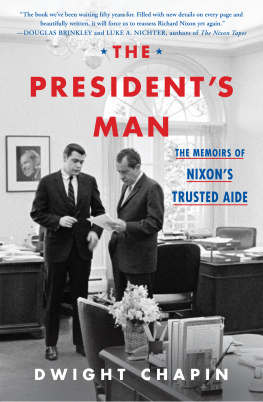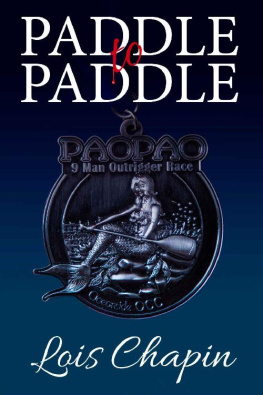This edition is published by PICKLE PARTNERS PUBLISHINGwww.picklepartnerspublishing.com
To join our mailing list for new titles or for issues with our books picklepublishing@gmail.com
Or on Facebook
Text originally published in 1945 under the same title.
Pickle Partners Publishing 2015, all rights reserved. No part of this publication may be reproduced, stored in a retrieval system or transmitted by any means, electrical, mechanical or otherwise without the written permission of the copyright holder.
Publishers Note
Although in most cases we have retained the Authors original spelling and grammar to authentically reproduce the work of the Author and the original intent of such material, some additional notes and clarifications have been added for the modern readers benefit.
We have also made every effort to include all maps and illustrations of the original edition the limitations of formatting do not allow of including larger maps, we will upload as many of these maps as possible.
THE 4th MARINE DIVISION IN WORLD WAR II
BY
FIRST LIEUTENANT JOHN C. CHAPIN, USMCR
FOREWORD
The major ground component of the active Marine Corps Reserve is the 4th Marine Division, Fleet Marine Force. The combat record of this division in World War II was exemplary; in the short space of one year it participated in four major amphibious assaults and won two presidential citations. The interest in its battle record among the reservists who now serve in its ranks has prompted the republication of this brief history, originally published in August 1945 and reprinted in 1974. This new reprint contains a brief history of the reserve 4th Division, written by Colonel Joseph B. Ruth, USMCR, a former member of the 25th Marines. Also included are copies of the divisions lineage and honors, a list of its commanders, and a list of its units and their locations.
The author of the 1945 history, then First Lieutenant John C. Chapin, served in the 3d Battalion, 24th Marines of the 4th Division. Assigned to the Historical Division when he recovered from wounds received in combat in Saipan, he completed this history and a similar one of the 5th Marine Division before his release from active duty.
E. H. SIMMONS
Brigadier General, U. S. Marine Corps (Ret.)
Director of Marine Corps History and Museums
Reviewed and Approved:
1 September 1976
REACTIVATION OF THE 4TH MARINE DIVISION
Early in 1962, Secretary of Defense Robert S. McNamara indicated to the Congress that he wanted the Marine Corps to have a fourth division/wing team, to be formed of Ready Reserves. In April of that year, the Commandant of the Marine Corps announced a major reorganization of the Marine Corps Reserve to be effective 1 July 1962. In this reorganization, 53 reserve units were redesignated as 4th Marine Division units.
While 1 July 1962 is regarded as the date of reactivation of the division, it was not until 14 February 1966 that the 4th Marine Division headquarters nucleus was actually activated at Camp Pendleton. The division was given the primary mission to establish an effective staff nucleus capable of directing, controlling and integrating, as directed, the mobilization planning and logistics functions preceding the activation of the 4th Marine Division and of ensuring an orderly and efficient mobilization of the division. Major General Robert E. Cushman, Jr., commanding general of Camp Pendleton was given the additional responsibility as the commanding general of the division.
The small division staff immediately set about its many demanding tasks including the development of mobilization plans, standing operating procedures, and post-mobilization training programs. Another major task was the conduct of annual training for reserve units assigned to Camp Pendleton. This latter function included the preparation of operation and control plans for air/ground exercises held during the summer training periods. Both regular and reserve forces took part in these exercises.
On 23 June 1966, the World War II division colors were presented to General Cushman, significantly at a 4th Marine Division Association meeting at Camp Pendleton, California. Reminiscent of a passed torch, a new generation of Marines was eager to prove itself worthy of the trust attendant in the acceptance of the proud colors.
Even before the headquarters nucleus had been formed, still other changes were on the drawing board. In late 1965, the Commandant approved a plan to further reorganize the Organized Marine Corps Reserve so that the division/wing team would become a mirror image of its regular counterparts. The first step toward achieving this goal was to reorganize the 4th Marine Aircraft Wing so that it would reflect an active wing. Other steps that were required to accomplish the Commandants directive were: establish division combat and combat support units together with certain force troops units; form the 4th Force Service Regiment (completed in June 1968); and form FMF augmentation units. To complete the reorganization, active, duty colonels were assigned as commanders of the reserve regiments, reserve brigadier generals were assigned as assistant division commanders, and an active duty general officer was assigned as a fulltime division commander. All of these changes were made by 15 July 1970 when Brigadier General Leo J. Dulacki arrived to take command of the division. One month later, General Dulacki was promoted to major general. The nucleus designation was dropped with the command unit now being designated as Headquarters, 4th Marine Division.
With the divisions new structure came a new mission. The division was now responsible for training all Organized Marine Corps Reserve ground units. The Commandants intent of 1965 had been accomplished and the Marine Corps had one more division/wing team. The new change antedated by three years the Total Force Concept, the Department of Defense policy of integrating reserve component units into the wartime planning and programming process.
The 4th Marine Division was now a fully structured force in its own right, able to muster and move out to a combat assignment within a relatively short period of time. In still another change, effective 17 May 1976, the 4th Division Support Group was formed, providing the division with selective combat service support which includes combat engineers, tactical motor transport, and an assault shore party. In a move external to the division, certain battalions were added to the 4th Force Service Regiment, now redesignated as the 4th Force Service Support Group.
The ultimate goal of any Marine division is readiness, but the 4th Marine Division has one peculiar problem not shared with the regular divisions. An unusual span of control situation is brought about by the geographic dispersion of some 200 division units throughout the United States. This challenge has been met by the strong resolve and abundant energies of the commanding generals and their staffs together with the cooperation, long hours, and sheer doggedness of the regimental commanders, their officers and NCOs.











